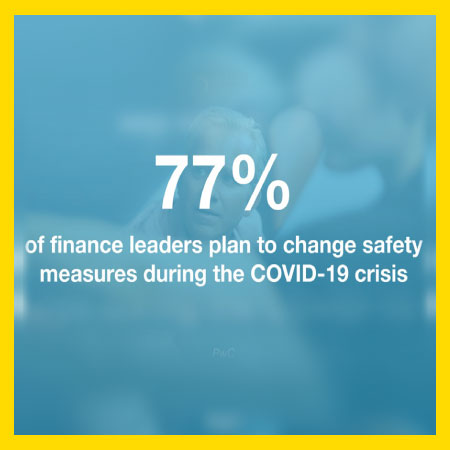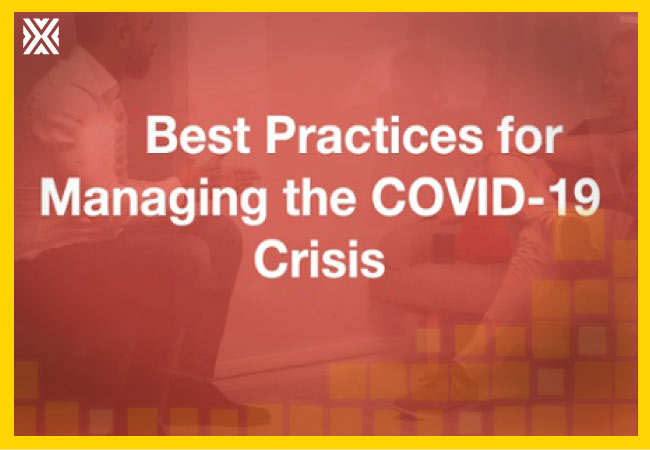Currency
June 21, 2020

Despite the pressures leadership may feel to return to work, there is a core truth they may not want to face: Rushing back to the way things once were increases the risk of failure in the present.
The coronavirus pandemic is causing uncertainty in all corners of our society. People are anxious for life to return back “to normal,” but can’t envision what normal even looks like yet. Public officials are waiting on data and science to guide them to a benchmark that will tell them when it’s safe to end physical distancing, while business leaders are watching the clock and wondering if they’ll have a business to return to when this pandemic becomes less of a public health threat.

Despite the pressures leadership may feel to return to work, there is a core truth they may not want to face: Rushing back to the way things once were increases the risk of failure in the present.
The reason is because life is not what it was pre-pandemic. People change, equipment breaks down, the process is likely outdated. This is why most companies create what the safety industry calls a Management of Change (MOC) document. Simply put, the MOC is your best guarantee of preventing accidents and injuries that could be catastrophic. It identifies the added risks that have emerged since the crisis, creates a communication blueprint to make sure all the gatekeepers within the company are on the same page, and provides a guide to implement the changes to the operating procedure in a concise and thorough manner.
Before leadership makes the decision to start up production, the following questions need to be answered:
Your workforce is the one thing that can change the most in a crisis. Companies tend to overlook this factor because it’s not obvious. But consider this scenario: What if the pandemic forced your company to furlough employees, resulting in some employees never returning? If this is the case, this now means your three-person control room team is now a single person, or it could involve a team that does not have the knowledge or experience of the team it replaced. That could create significant hazards to your procedures and more. A MOC would recognize the change and create a new process to accommodate your current workforce.
Physical distancing, the reliance on face masks and gloves—All of it is expected to be part of our lives in the distant future. So what does that mean for your shop floor? Your warehouse? You will likely have to modify your equipment to accommodate physical distancing. You will likely have to fit in more breaks because your employees are not used to wearing masks and could overheat. Once again, these are factors that you likely didn’t think of, but need to be addressed in your MOC.
The answer is simple: Likely not. It will be difficult to safely train everyone in a single room as before. A conference room that holds 75 people should only hold 25 people. Also, training rooms themselves could be redundant, especially now as more consultants are moving to virtual training in an effort to provide a safe environment on both sides of the computer screen.
As you might tell, a MOC is necessary to address inevitable changes ahead. Because you can’t underestimate the risks and hazards that can result from even seemingly minor changes. The MOC helps your organization follow a systemic process to identify risks and ensure that they are properly addressed before implementing changes.
In other words, a MOC program will force you to slow down and take a step back. This could potentially save lives. Think about all physical, process, procedural, personnel and organizational changes that have occurred. Some are made intentionally, and some are the result of the current pandemic: Staff cuts and physical distancing guidelines are just two examples.
A robust MOC program will address the basis for the change, the impact to safety and health, modifications to operating procedures, temporary or permanent changes, and the notification and training of all affected parties. You’ll be in safe hands when the new normal arrives.
The coronavirus pandemic is causing uncertainty in all corners of our society. People are anxious for life to return back “to normal,” but can’t envision what normal even looks like yet. Public officials are waiting on data and science to guide them to a benchmark that will tell them when it’s safe to end physical distancing, while business leaders are watching the clock and wondering if they’ll have a business to return to when this pandemic becomes less of a public health threat.

Despite the pressures leadership may feel to return to work, there is a core truth they may not want to face: Rushing back to the way things once were increases the risk of failure in the present.
The reason is because life is not what it was pre-pandemic. People change, equipment breaks down, the process is likely outdated. This is why most companies create what the safety industry calls a Management of Change (MOC) document. Simply put, the MOC is your best guarantee of preventing accidents and injuries that could be catastrophic. It identifies the added risks that have emerged since the crisis, creates a communication blueprint to make sure all the gatekeepers within the company are on the same page, and provides a guide to implement the changes to the operating procedure in a concise and thorough manner.
Before leadership makes the decision to start up production, the following questions need to be answered:
Will operations start back up with the same number of personnel?
Your workforce is the one thing that can change the most in a crisis. Companies tend to overlook this factor because it’s not obvious. But consider this scenario: What if the pandemic forced your company to furlough employees, resulting in some employees never returning? If this is the case, this now means your three-person control room team is now a single person, or it could involve a team that does not have the knowledge or experience of the team it replaced. That could create significant hazards to your procedures and more. A MOC would recognize the change and create a new process to accommodate your current workforce.
Were there any changes to the equipment during the shut-down or decreased operation period?
Physical distancing, the reliance on face masks and gloves—All of it is expected to be part of our lives in the distant future. So what does that mean for your shop floor? Your warehouse? You will likely have to modify your equipment to accommodate physical distancing. You will likely have to fit in more breaks because your employees are not used to wearing masks and could overheat. Once again, these are factors that you likely didn’t think of, but need to be addressed in your MOC.
Will your current procedures for training hold up?
The answer is simple: Likely not. It will be difficult to safely train everyone in a single room as before. A conference room that holds 75 people should only hold 25 people. Also, training rooms themselves could be redundant, especially now as more consultants are moving to virtual training in an effort to provide a safe environment on both sides of the computer screen.
Conclusion
As you might tell, a MOC is necessary to address inevitable changes ahead. Because you can’t underestimate the risks and hazards that can result from even seemingly minor changes. The MOC helps your organization follow a systemic process to identify risks and ensure that they are properly addressed before implementing changes.
In other words, a MOC program will force you to slow down and take a step back. This could potentially save lives. Think about all physical, process, procedural, personnel and organizational changes that have occurred. Some are made intentionally, and some are the result of the current pandemic: Staff cuts and physical distancing guidelines are just two examples.
A robust MOC program will address the basis for the change, the impact to safety and health, modifications to operating procedures, temporary or permanent changes, and the notification and training of all affected parties. You’ll be in safe hands when the new normal arrives.









